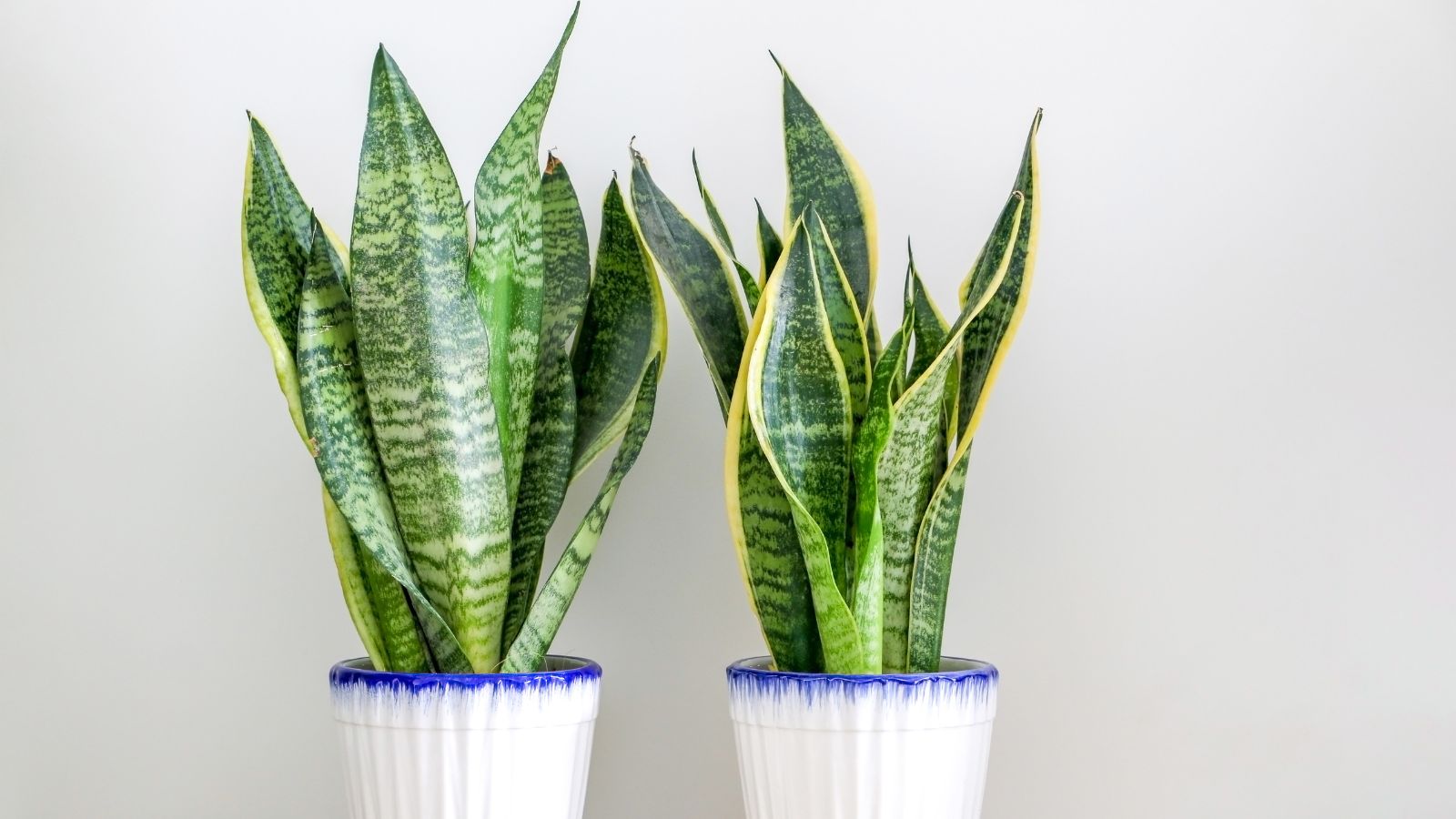
Snake plants, though hardy and low maintenance, can still run into problems if not cared for properly.
Knowing how to care for a snake plant will help you to recognize the signs that your snake plant is dying – or at least isn't thriving as it should be – so that you can act quickly to restore it to full health.
We consulted houseplant experts to identify the key indicators of a snake plant in distress, the underlying issues they point to, and how to address them with natural remedies, product recommendations, and simple adjustments to your care routines.
1. Root rot
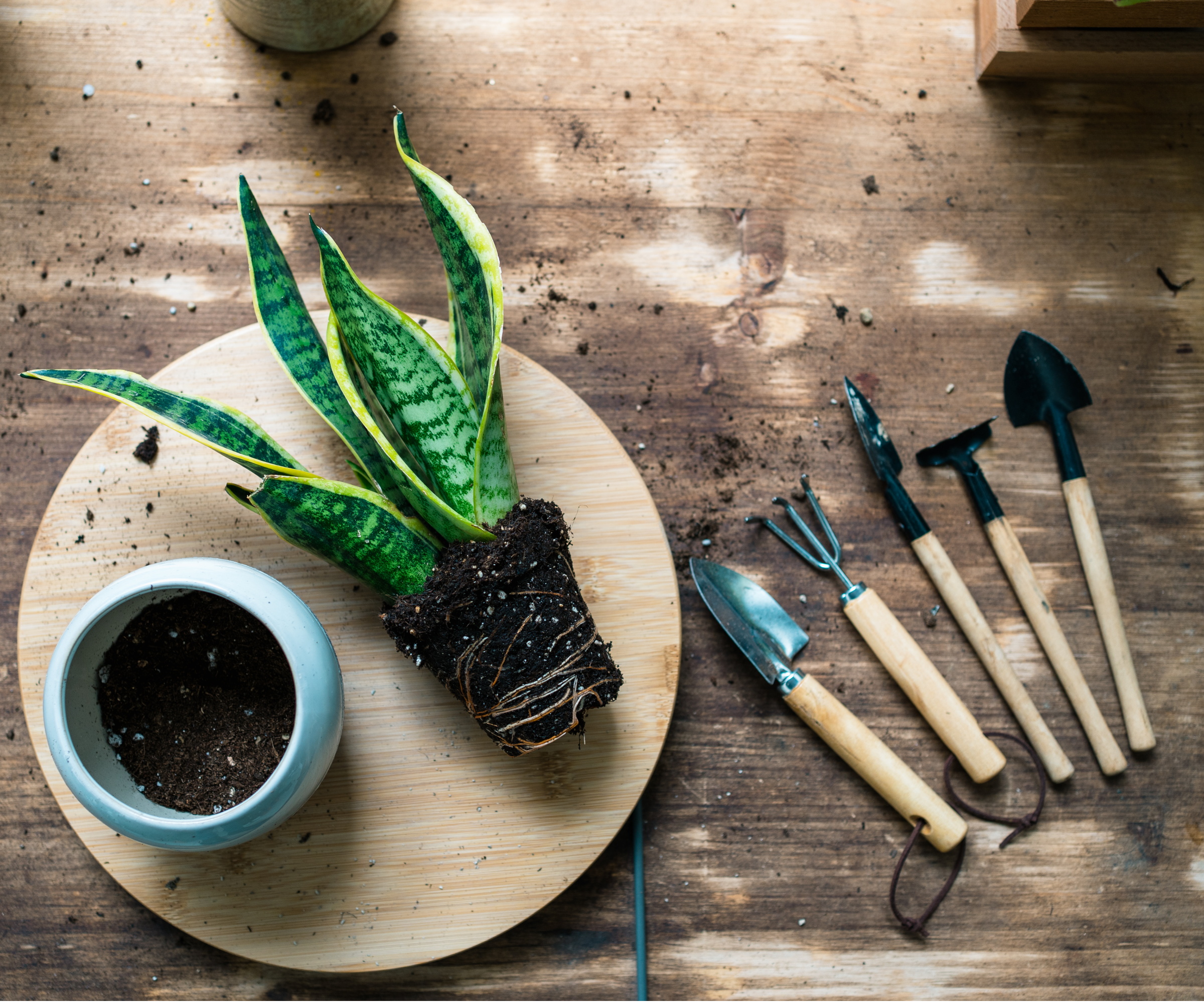
Houseplant root rot is caused by overwatering. Horticulturist Justin Hancock at Costa Farms explains: 'If a snake plant is watered enough that the potting mix stays wet (the spaces between individual particles in the mix are filled with water rather than air), the roots can start to suffocate and die. Once they die, fungal organisms come in, causing them to rot away.'
Signs of root rot
- Mushy, black, or brown roots
- Yellowing leaves
- A foul smell coming from the soil
Solutions
Treat root rot by removing the plant from the pot, prune away houseplant roots that are rotted or rotting (blackened or mushy), and allow the healthy roots to dry for a day. Afterwards, repot your snake plant in fresh, well-draining soil.
Southern Ag liquid copper fungicide, from Amazon helps prevent further root rot. Alternatively, for a natural solution, sprinkling cinnamon on the roots before repotting acts as a natural anti-fungal agent, helping to inhibit fungal growth.
To keep your snake plant healthy moving forward, its important to address overwatering. Only water your snake plant when the top one to two inches of soil are completely dry.
In winter, reduce watering even further. Justin Hancock recommends, 'Letting the potting mix dry about 50% of the way down (if you’re watering it traditionally) can help prevent the roots from drowning.'
You can also improve drainage by making sure the pot has drainage holes and is made from a porous material, such as unglazed ceramic or terracotta, and using well-draining soil to prevent water from sitting around the roots. FoxFarm Happy Frog Potting Soil from Amazon is great for drainage and aeration.
2. Poor drainage and soil compaction

'If your potting mix doesn’t provide good drainage – there are fewer or tiny spaces between the individual particles that hold air for the roots to breathe – your snake plant will be more susceptible to having its roots suffocate,' warns Justin. 'Likewise, if the soil or potting mix become compacted over time, that pushes individual particles together, reducing air space.'
Signs of poor drainage and soil compaction
- Water pooling on the soil surface
- Leaves becoming mushy despite light watering
Solutions
It's as simple as reconsidering your planting products. A potting mix or plant pot with poor drainage and lack of aeration can suffocate a snake plant's roots, leading to water retention and root rot.
Justin advises, 'Prevent these issues by making sure you’re using a potting mix made for pots, planters and containers, rather than outdoor garden soil.'
Choose a well-draining soil mix, such as Hoffman organic cactus and succulent soil, from Walmart, and a pot with drainage holes – preferably a terracotta or unglazed ceramic pot, which allows excess moisture to evaporate more efficiently. Adding perlite, such as this Perfect Plants organic perlite from Walmart, or sand to your soil can further improve drainage and aeration, ensuring your snake plant's roots stay healthy and well-oxygenated.
3. Bacterial leaf rot
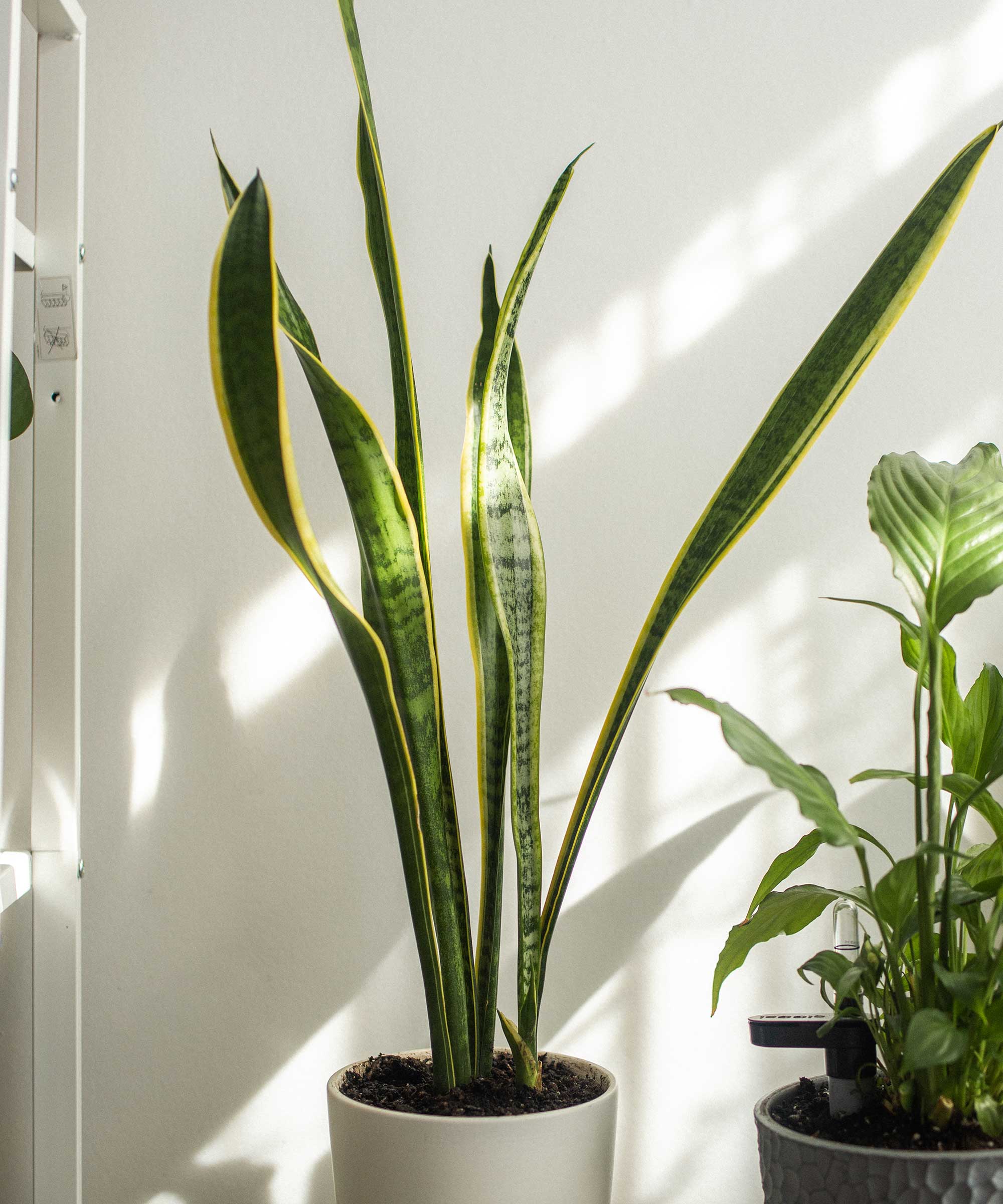
'Snake plants usually do a great job resisting disease, but if your plant is particularly stressed (grown in really low light, not watered well, etc.), it can be more susceptible to attack from diseases, including various fungi and bacteria,' explains Justin.
Signs of bacterial leaf rot
- Soft, wet spots on the leaves
- Foul-smelling, slimy decay
Solutions
Trim the affected leaves using sterilized scissors to remove the infected parts.
Reduce humidity by avoiding misting, incorporating dehumidifiers nearby, and improving air circulation around the plant.
Use a bactericide, such as a copper-based fungicide, to prevent the infection from spreading. Alternatively, a diluted hydrogen peroxide spray (1 part peroxide to 4 parts water) can help naturally kill bacteria. This Amazon basics hydrogen peroxide is $5.91 for 32oz.
4. Pest infestation
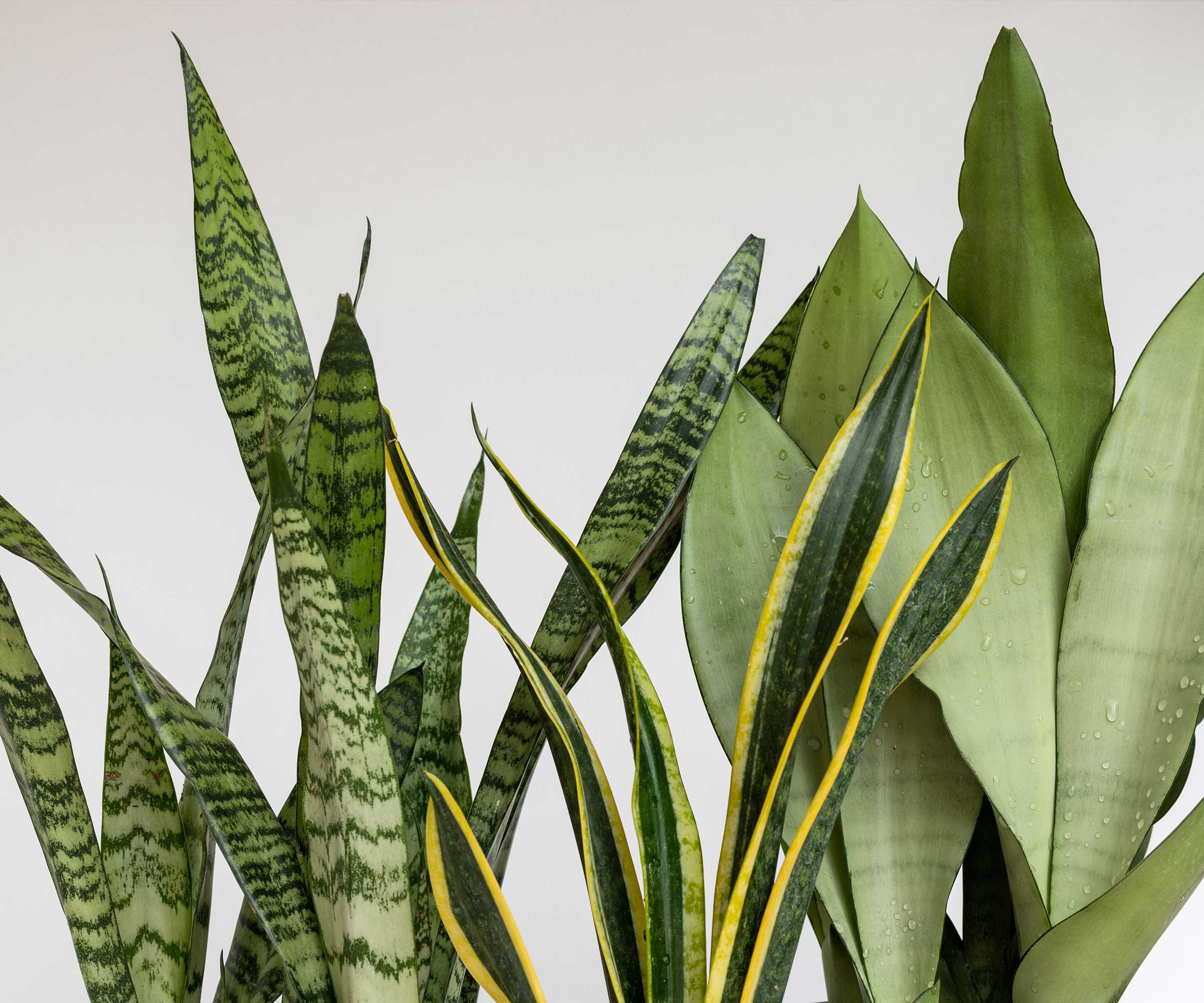
Fungus gnats, mealybugs and spider mites are the most common pests to create problems for your snake plant.
Justin says: 'Fungus gnats are perhaps the most common insect we see indoors with plants. Happily, while fungus gnats are really annoying, they’re rarely pests. These small flies lay eggs in the soil; the larvae eat organic matter in the potting mix, and then emerge from the soil as adults that fly around.'
Signs of pest infestations
- Tiny bugs crawling on the soil or leaves
- Sticky residue or webbing on leaves
Solutions
To minimize the problems caused by fungus gnats, Justin Hancock advises 'keeping the potting mix on the dry side, and creating a one to two in-deep barrier of sand over the top of the potting mix. Sand dries out too fast to sustain fungus gnat larvae.'
To catch any emerging adults, use sticky traps – such as this 30 pack of fly traps from Walmart. Another effective natural pest control method is to spray a diluted mix of water and dish soap on and around the plant and to sprinkle cinnamon on the soil.
Insecticidal soap labeled for use on mealybugs can eliminate these soft-bodied pests. 'Mealybugs can be difficult to treat because their white, fluffy coats resist some pesticides,' says Justin.
'But wiping down your leaves on a weekly basis with a wet cloth or paper towel can help remove them. (Happily, it’s a lot easier to physically remove them from most snake plant varieties than other houseplants.) We recommend this Garden Safe insecticidal soap from Amazon.
'Spider mites are relatively uncommon on snake plants, but you can treat for them the same way you do mealybugs,' says Justin. We have also found neem oil spray, such as Bonide Captain Jack's neem max from Amazon, to be effective on spider mites and mealybugs.
5. Yellowing or browning tips

Browning and yellowing tips are another sign of a snake plant in distress, and like root rot, can be caused by a poor watering routine.
'Snake plants are super tolerant of going without a drink since they're native to drier regions, but some well-intentioned plant parents end up overcompensating and drowning the plant,' says Megan Brame, Owner and Host at Plantrums + The History of Plants.
However, this snake plant problem isn't just down to under-watering.
Signs of yellowing or browning tips
- Tips will start to yellow and brown
- Leaves will die off completely
Solutions
'Brown or yellow leaf tips can occur from a wide range of factors – too much or too little water, over-fertilization, exposure to hot or cold temperatures, etc. Even old age starts showing on the tips and the discoloration works its way through the individual leaf as it continues to age,' explains Justin Hancock. 'So you may need to do a little detective work.'
So, if your snake plant is turning yellow, check how to fertilize it correctly (once a month in the growing season), ensure your room temperature is between 60°F and 75°F, and consider your watering routine, as both overwatering and underwatering can cause issues.
Avoid using faucet water when possible. Instead, use filtered or distilled water to prevent mineral buildup, or allow faucet water to sit overnight to let the chlorine dissipate before using it. The General Hydroponics pH Test Kit, such as this one from Walmart, will help you check your home's water quality.
In dry climates, use a humidity tray to prevent dehydration. Placing the plant near other houseplants can also help naturally regulate humidity levels. Use a hygrometer thermometer, such as this ThermoPro model from Walmart.
'My best advice for someone who worries they'll get it wrong is to plant [their snake plant] in soil that has chunks of organic matter or, at least, a healthy mix of perlite,' says Megan Brame.
'When planting it, don't press down on the soil to anchor it – you'll risk compacting the soil and making it difficult for excess water to drain. Instead, tamp it down by lightly dropping the pot on a tabletop a few times. This will move the root ball further down into the pot and anchor it into place.'
6. Too much or too little light
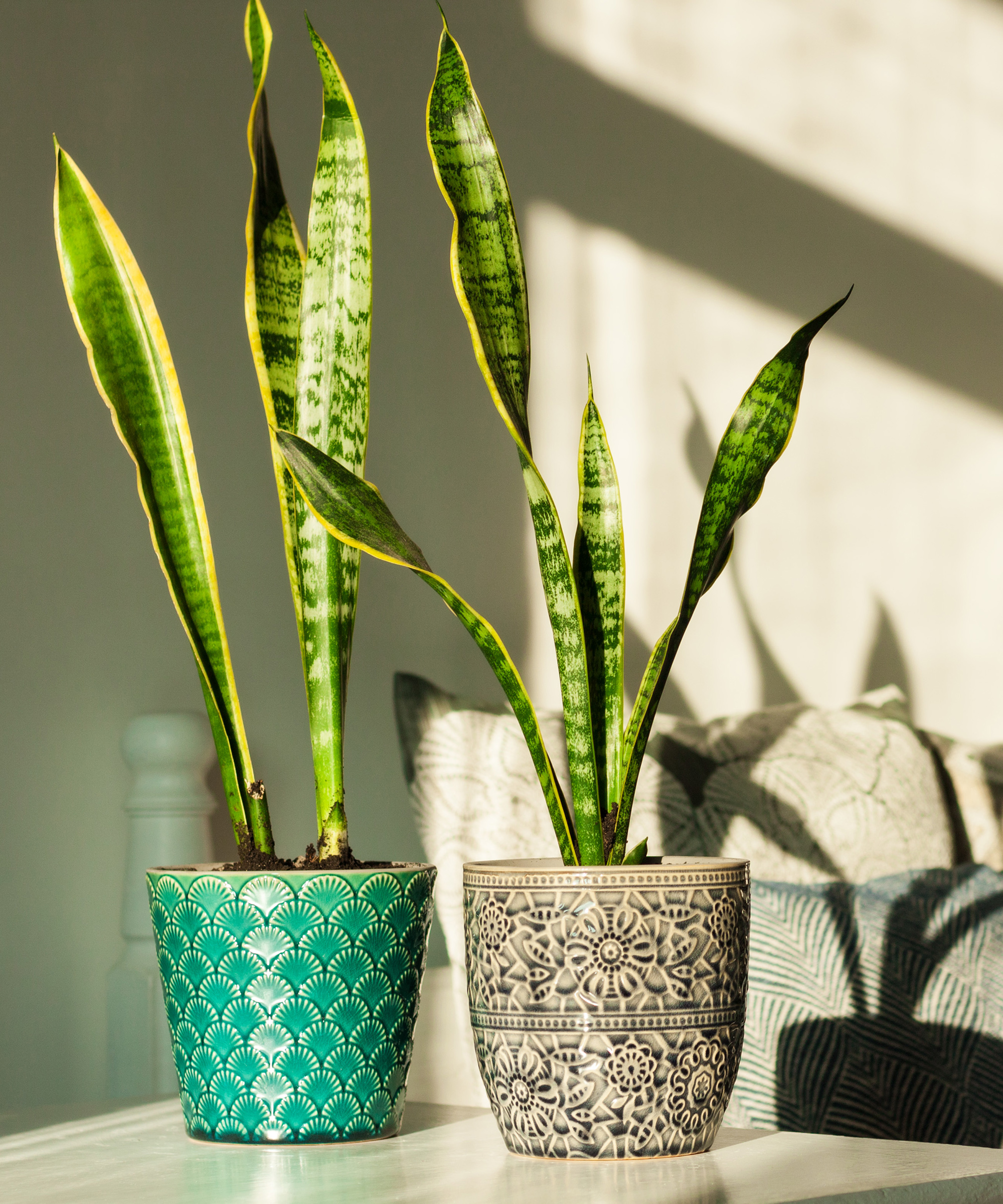
It's a myth that snake plants are ideal candidates for a list of low light plants, as too little light can cause them problems.
'They're often put on lists that say they're low-light loving when it should be low-light tolerant,' says Megan Brame.
'Can they survive in low light conditions? Sure. But snake plants are native to the dry, tropical regions of West and Central Africa, places that aren't known for being dark and desolate. To make a snake plant truly happy, it needs bright, indirect light (think of being near a window that has blinds or a semi-translucent curtain).'
Signs of light stress
- Weak, leggy growth (too little light)
- Leaves curling inwards or becoming twisted
Solutions
The solution is simple: find the right spot, placing your snake plant in bright, indirect light, avoiding direct sunlight, and rotating your plant weekly to ensure even light exposure.
Using full-spectrum LED grow light bulbs, such as these grow light bulbs from Amazon, will help you supplement natural light when it's insufficient in low-light areas.
7. Temperature stress
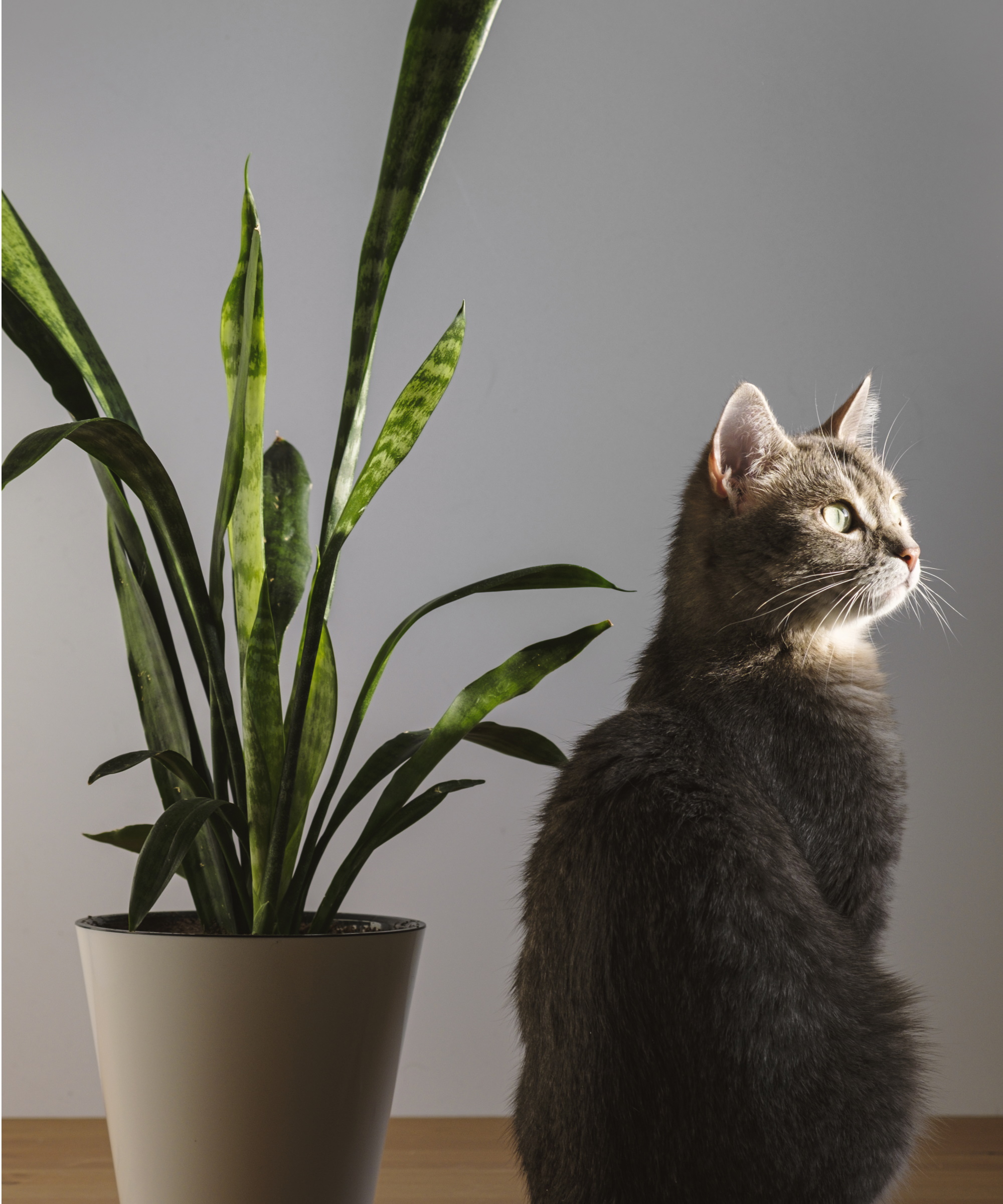
Temperature damage can vary based on how hot or cold your snake plant became, how quickly the heat or cold came on, and how long the plant was over-heated or too cold.
Signs of temperature stress
- Snake plant leaves drooping after cold exposure
- Scorched leaves from excessive heat
Solutions
Are snake plants cold-tolerant? Not particularly. Neither are they tolerant of exposure to really high temperatures. Like most houseplants, they are less likely to suffer if kept in consistent conditions. Ideally, keep room temperature between 60°F to 75°F, and avoid placing your snake plant near radiators, air conditioners, or drafty windows.
FAQs
How do you get rid of powdery mildew on snake plants?
Fungal disease, like powdery mildew, can pop up if a snake plant is stressed or in poor growing conditions.
To banish fungal diseases, Justin Hancock explains: 'Growing your plant in plenty of light and watering adequately can go a long way to preventing powdery mildew. So can providing good air flow – so setting a small fan nearby the plant to run periodically can be helpful. If you do see this disease pop up, removing the affected leaf as soon as you see it can often stop it from jumping to other leaves.'
If you're wondering why your snake plant leaves are curling, this can be normal; however, in some cases, it can indicate an underlying problem. 'You may see leaves curling if your snake plant is getting too much light,' explains Scott Seargeant. 'Excess light causes the plant to grow faster than normal, leading to uneven growth and causing leaves to curl. Too much fertilizer can also cause leaf curl, fast week growth, disease, and attract insects.'
By staying vigilant, regularly inspecting your plants, assessing the presence of environmental stressors, and sticking to a healthy care routine, your snake plant can continue to be a beautiful, hardy addition to your home.







